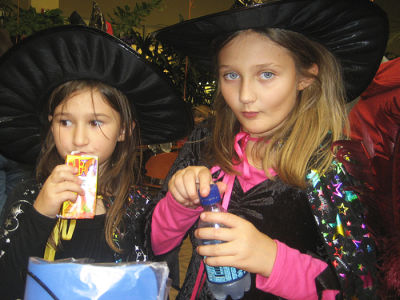I went to the Tokyo medicinal botanical garden that the only "poppy" can be seen in Tokyo
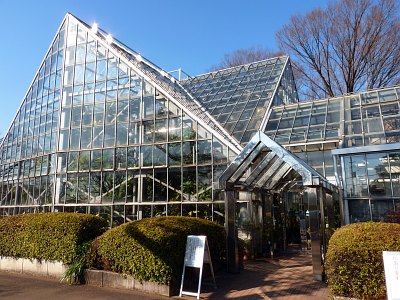
In Japan, I went to the Tokyo medicinal botanical garden which is doing test cultivation of cannabis etc. besides poppy which cultivation is prohibited in Japan in order to become a raw material of opium of drugs. It becomes a synthetic raw material for influenza treatment drug TamifluToshikimiIn addition to medicinal herbs,FukushuneYaHigambanaIt was half a fun half visit because it was cultivated various plants such as poisonous plants such as cocoa which is raw material of chocolate etc.
Details are as below.
Seibu Hajima line, a sign that comes right after getting off Higashiwa City Station. The entrance is not here but walks a bit more.
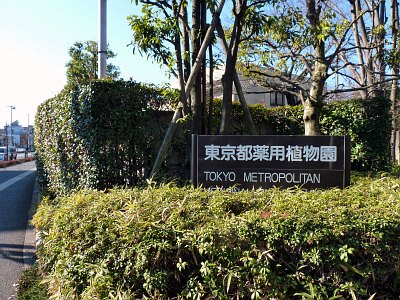
This is the main entrance gate.
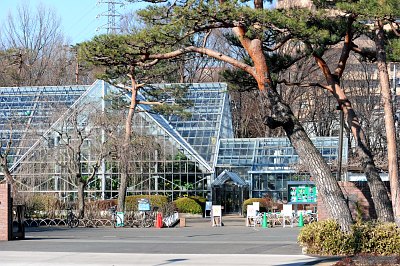
There are signs on the front gate as well.

It is a guide map that you can see when walking straight from the entrance.
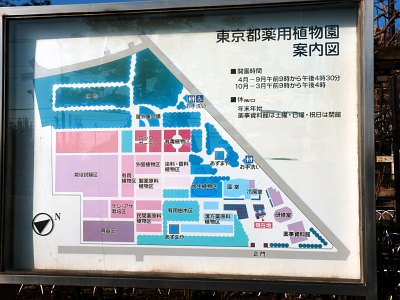
There is an exhibition room etc. There is a medicinal material museum. Since there is a guide pamphlet, it is convenient to go before seeing the inside of the garden.
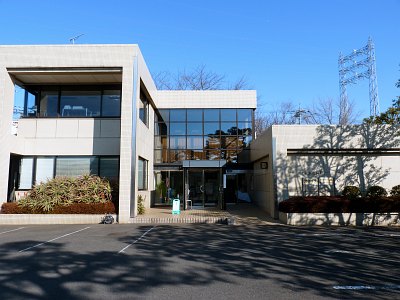
The restroom is also here.
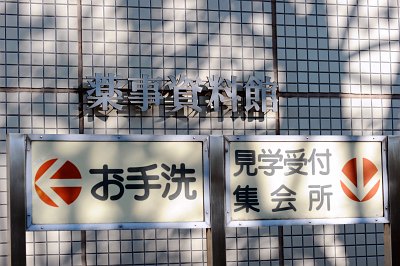
Information pamphlet of the botanical garden.
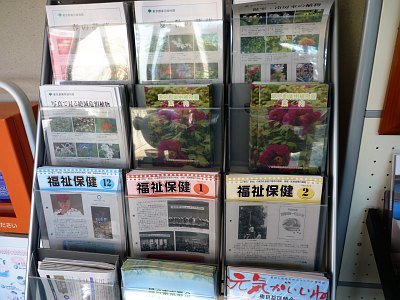
"A lot of contributions were made to the metropolitan government by developing simple discrimination laws on poppy and Asa due to outstanding ideas and outstanding efforts."
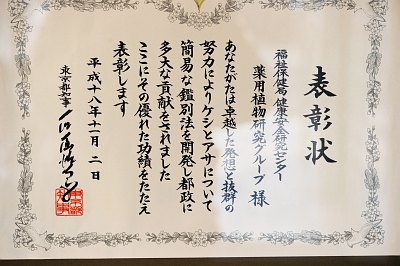
An exhibition room in the museum. Plants and the like which we do not see usually are exhibited.
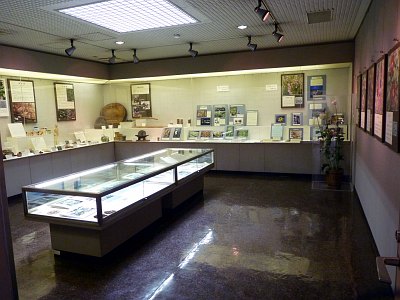
Kakkon used for traditional Chinese medicine prescription.
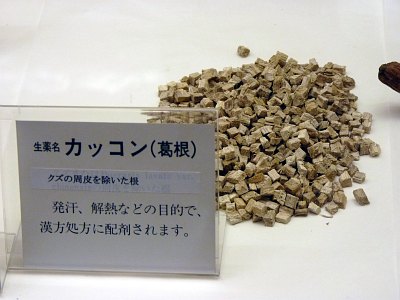
Kakkon-yu where cupcon was dispensed is also put together.
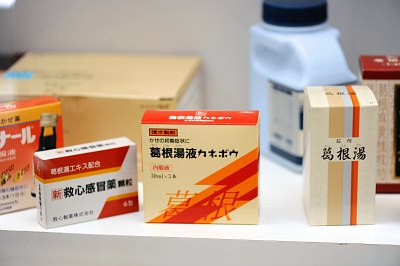
Cordyceps sinensis of mushrooms growing as a nutrient by clinging to insects and the like. It is used for crude drugs and is traded at a high price.
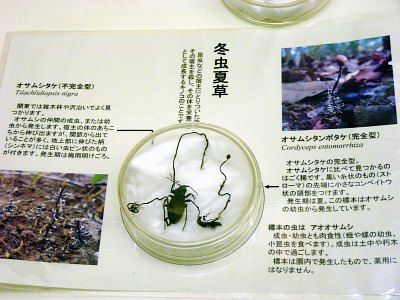
Leaving the museum, it is a greenhouse that can be seen from the front gate.

There is also a cooling room that keeps room temperature below 25 degrees in summer.
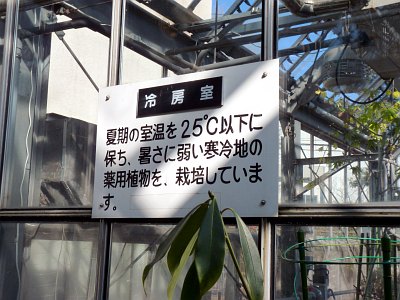
Cacao fruit. Fermenting the seed inside will become cocoa beans and chocolate will be the cocoa raw material.
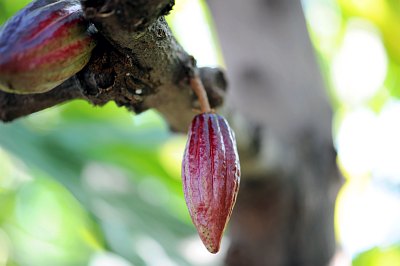
Hindu holy tree, Bengal Bodaju.
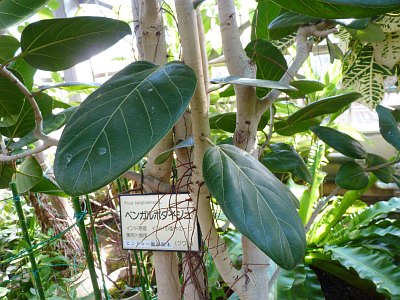
Buddhist saint trees, Muyuju (nonfatigue).
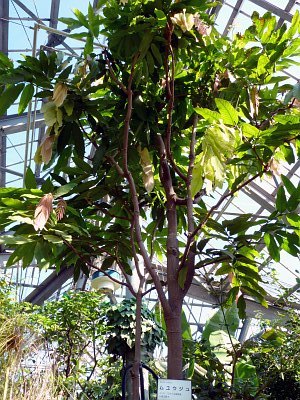
vanilla.
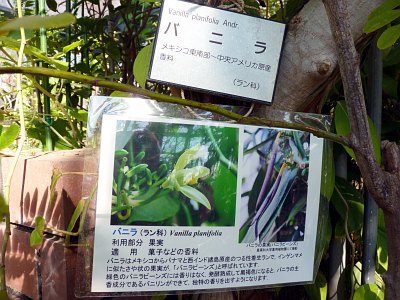
The vanilla beans of the fruit is not fragrant yet, it will give out a distinctive scent when fermented and aged and turns blackish brown.
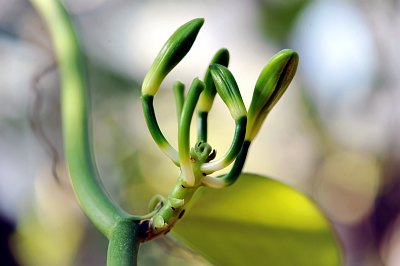
Aloe ferrox which is raw material of laxative.
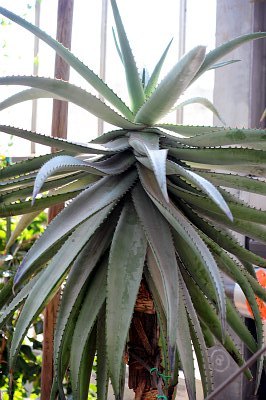
Even outside the greenhouse various plants are cultivated by being classified by purpose of use etc. I went there in a cold period so almost no plants could be seen except in greenhouses, but I will introduce some of what are being cultivated.
This area is the traditional Chinese medicine raw plant area.
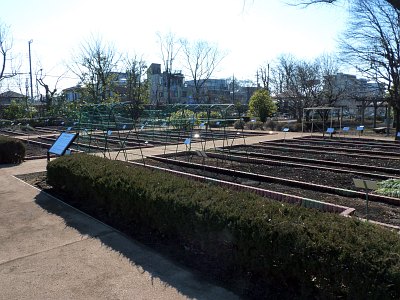
Fowl used for antitussive and so on.
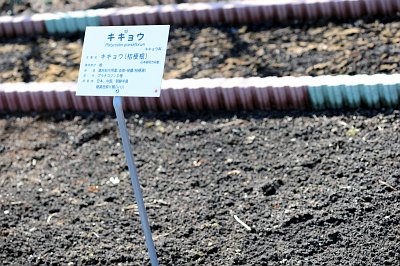
Aquatic plant area that collects plants that grow on the waterside.
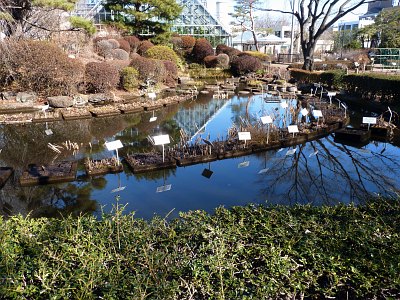

Lotus with stopper of diarrhea and diuretic in the root.
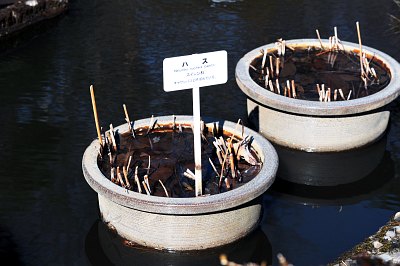
Useful tree.
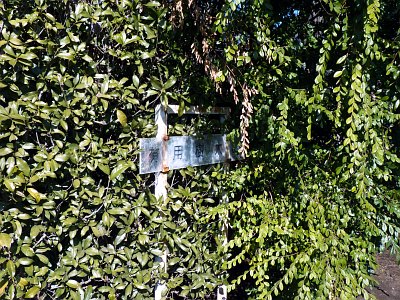
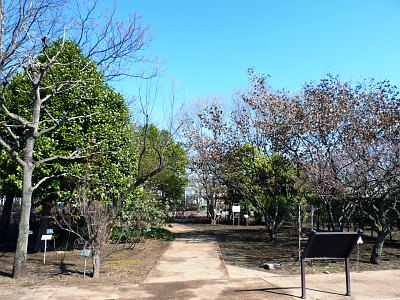
Umes with intestinal and antipyretic action.
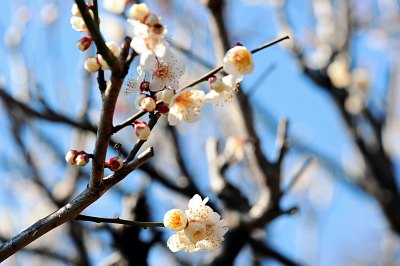
Ferns with flowers on countless hanging branches.
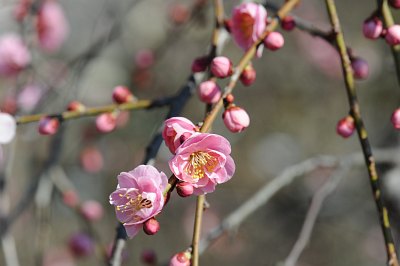
Rosaceae's fruit.
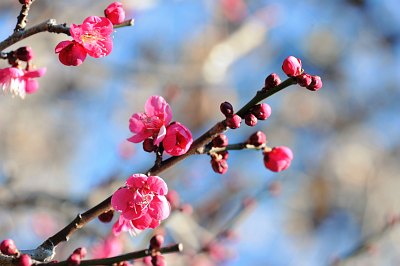
Nanten with anti-inflammatory or expectorant effect.
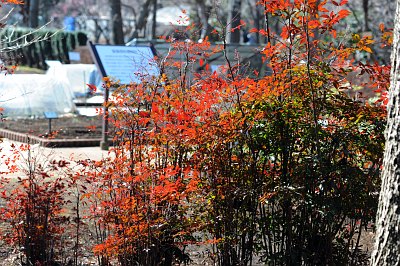
The actual dry extract isCandy in southern skiesIt is used for.

Plants that have been used as a medicine based on experience and legendary civilian medicinal material plant area.
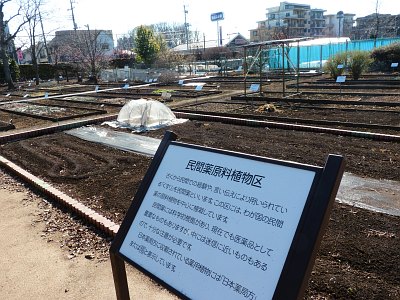
Milk thistle that is used to treat liver disease in Europe.


A toxic plant area that is scared of somehow approaching.
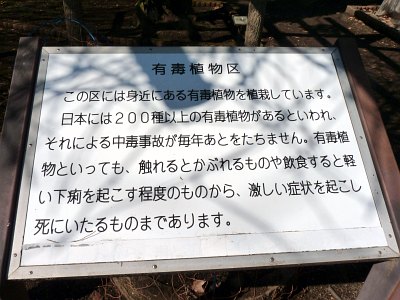
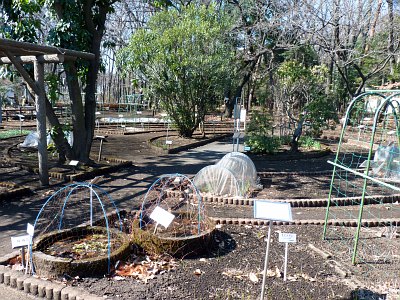
There are many notes such as "Please do not pick up falling fruit".
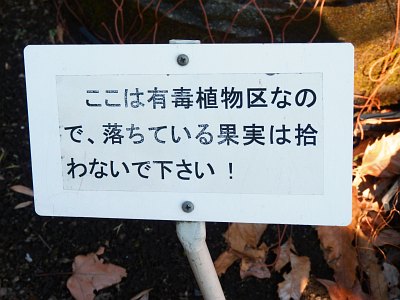
There are some plants to get rid of, so you need to be careful in passing.
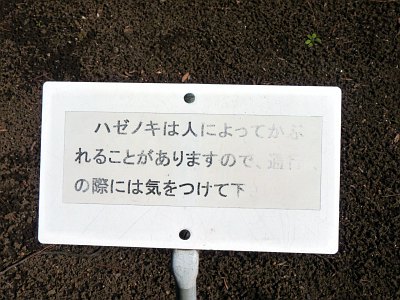
Ginkgo biloba is also a poisonous plant. There seems to be a case that a child who caused skin inflammation when it touches the exterior seed coat and poisoned the seed ginnan poisoned.

Daffodil that causes vomiting, diarrhea, etc. when mistakenly eating.
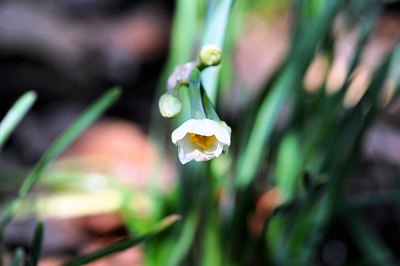
Omoto who dies of cardiac arrest when accidentally eating by the cardiotonic action of Rodey contained in the rhizomes.
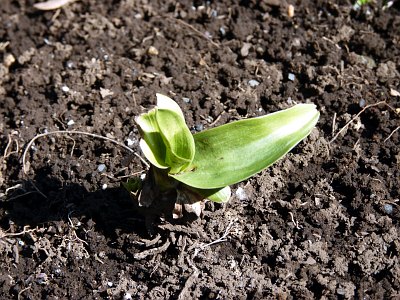
A yatsu that causes diarrhea when mistakenly eating.
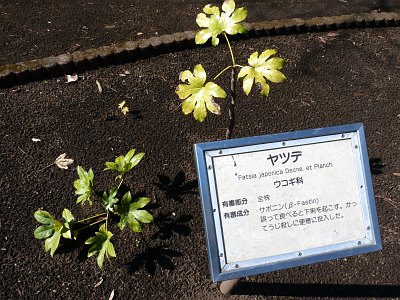
There is an alias called a tenonhahawichi (tengu's leaf fan), and it is said that there is an effect of amulet.
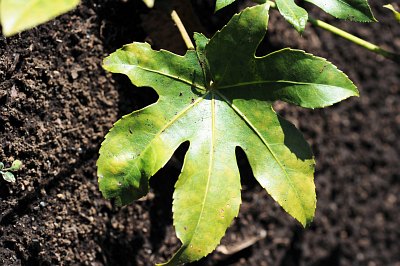
Higambuna. There are aliases such as Shitamagari and Shibitobana, whole plants are poisonous.
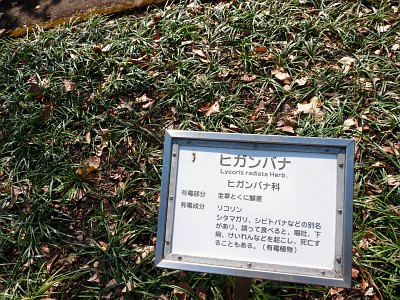
Eating mistakenly may cause vomiting, diarrhea, convulsions, etc. and may result in death. Red flowers bloom in September.
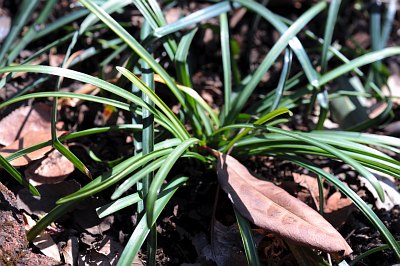
Christmas rose.
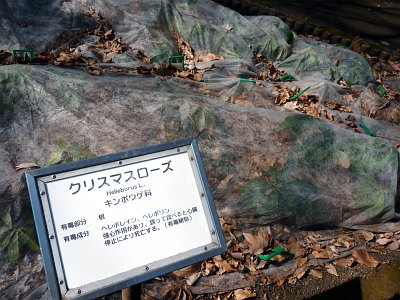
The name is gorgeous, but if you inadvertently eat it will die due to cardiac arrest.

Fukushuneu. If you eat erroneously you die due to cardiac arrest.

It was once an endangered species II (VU) published by the Japanese Ministry of the Environment.

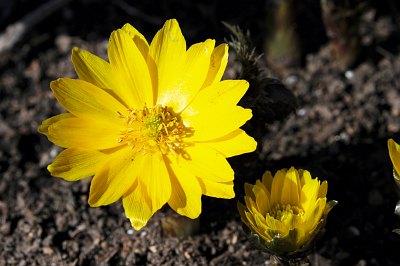
Looking at the poisonous plant area walking while looking like this.
YouTube - Toxic plant area of Tokyo medicinal botanical garden
Rock garden where rocks are arranged.
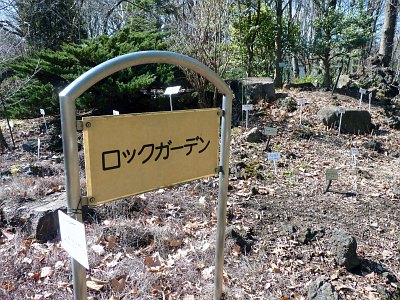
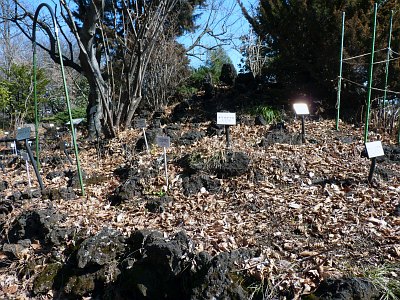
It becomes a wound medicine or a poultice medicine. There is a legend that his brother cut off his younger brother who took away the identity of the secret agent using this plant, and it is also the title of the horror touch novel game.
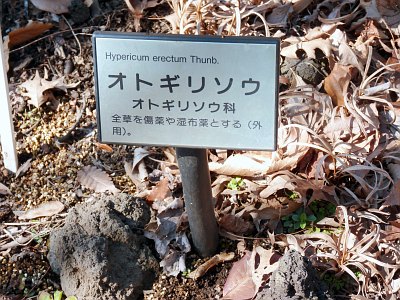
Outdoor meeting place.
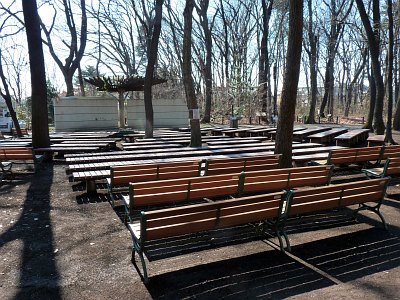
It may be used for herbal medicine classes.
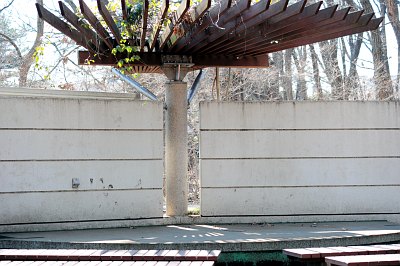
And this is Poppy · Asa Test District surrounded by wire mesh.
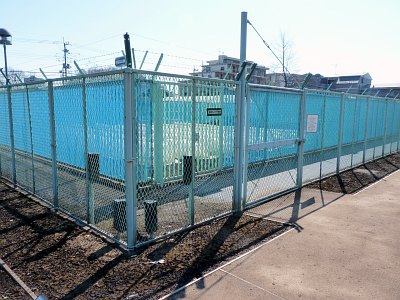
There are aspects such as analgesic effect by morphine that can be used for medicinal purposes, but permission is necessary for cultivation.
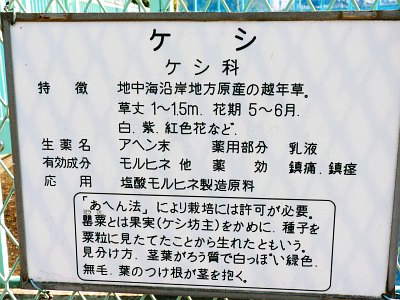
I was getting locked and I could not enter the wire mesh.
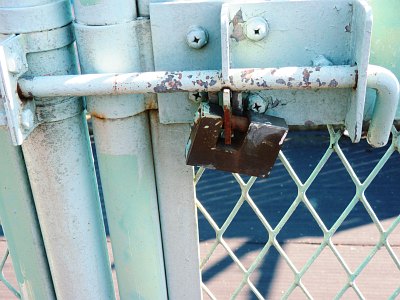
Vigilance is also strict and the surveillance camera is in operation.

Barbed wire that is stretched round.
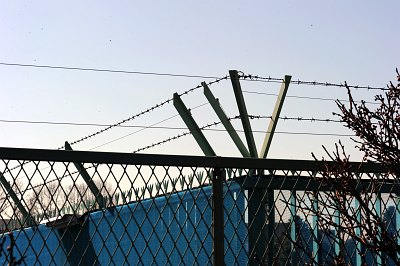
A corner is like a sensor.

Red lights are also attached.

Cultivated plants can be confirmed through the gaps of several nets somehow.
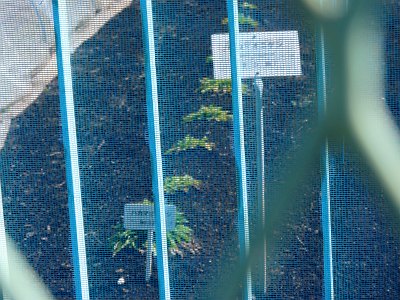

Looking at a movie like this.
YouTube - poppy-Asa test zone of the Tokyo medicinal botanical garden
Poppins which can be planted such as tunicus can be seen elsewhere in the garden.
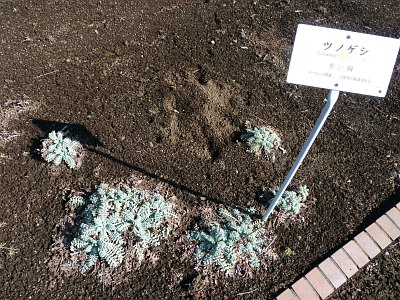

In general it was not possible to see a poppy that can not be cultivated clearly, but it was an interesting spot that I know the name well, but I can also find plants I have never seen before. There are several chairs, desks and so on, so you can enter in the park feeling as it is free of admission.
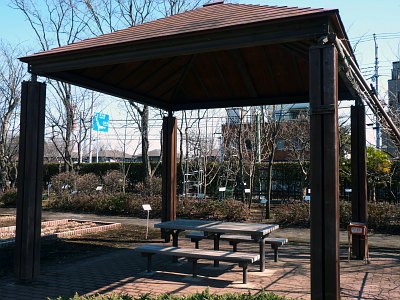
The place of Tokyo medicinal botanical garden is here. It is in the immediate place after getting off the station on the Seibu Hajima line.
View Larger Map
Open from 9: 00-16: 00 from October to March and from 9: 00-16: 30 from April to September. Every Monday and New Year's holidays are closed days. On the official website, there is "flower calendar" which understands the flowering time and "flower flower" to let you know the flowering situation, so please check the person who wants to see the flowers of that plant.
Tokyo Metropolitan Botanic Garden
http://www.tokyo-eiken.go.jp/plant/yakuyo001.html
Related Posts:






